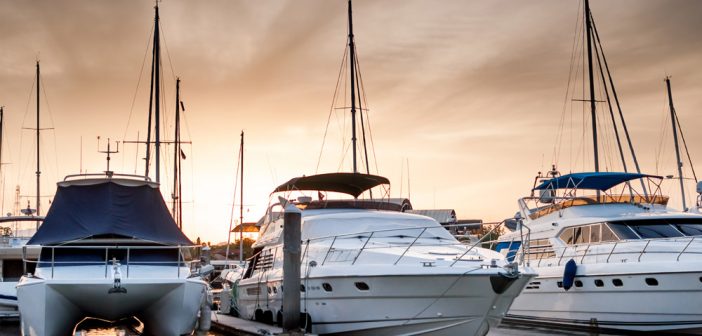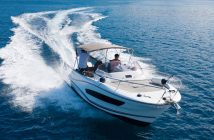Storms are dangerous to any boat, sea vessel, or even sailor. Leaving a boat out during a storm without taking the necessary proper precautions is a sure way to incur expensive, even lasting, damages. Storm surges and rising water can affect the boat in a number of ways. Whether you are docking your vessel or removing it from the water entirely, take these steps to ensure that the boat and all of its contents are safe.
Remove Any and All Personal Items from the Deck
Any small items that can be tossed around easily should be taken below deck; ideally, placed inside of a case or secured container. When taking the boat on land during a storm, it is wise to remove any valuable items that a trespasser would think to take. Any other items left on the deck must be secured properly, and ensure that the weight of all items on the boat is distributed evenly across it.
Seal Off All Openings
Ensure that any portholes are closed and exhaust holes, sea cocks, and any other openings have been sealed off tightly. If you’re storing your boat in water during the storm, verify that all holes are sealed properly and taped over, especially those that would be likely to take in water in the case of the vessel being laid down.
In water
Steer Clear of Crowded Areas
As careful as you may be, there is nothing more frustrating than seeing your boat damaged by another nearby vessel. While you may not have an option for a private dock, cove, or mooring field in every scenario (particularly if it is an emergency), take all precautions possible that your boat is as far from other boats and obstructions as possible.
Protect Your Vessel
The use of extra fenders on every side of your vessel will prevent damage if struck by another nearby boat or object. Hang these anywhere you can – you can’t be too cautious with them. Additionally, chafing can be a danger to your boat during a storm. Adding chafe guards on your lines can reduce this issue, if done correctly beforehand. If chafing gear is not available on hand, even a cotton t-shirt can be used in a bind.
Choose a Suitable Location
If you are able to make arrangements in advance, a dry dock with a safe hangar is an ideal setting for keeping a boat while riding out a storm. Similarly, a hurricane hole, or a naturally blocked marina, will provide safe harbor but will typically require planning in advance.
Alternately, berthing your vessel at a dock with large and sturdy pilings will provide a safe harbor for your boat so long as proper precautions have been taken, such as securing spring lines high and doubling mooring lines, allowing for slack in the case of water surge. Anchoring your boat in a harbor is a safe option so long as you have a way off, as damage from other boats is minimized. Remember to confirm that your anchors are quite heavy, the bottom of the harbor has adequate anchor hold, and that the anchors create three points of contact.
Use the Proper Lines
If you do choose to dock your boat, ensure that your dock lines are much longer, even doubled. When water level rises, the longer dock lines will allow the boat to rise with it rather than broaching or tipping over. It is highly recommended to utilize as many attachment points as possible, even doubling or tripling where you can. Make sure that the loads are evenly spread and attached to fixed, heavy objects.
On Land
Bring the Boat Inside
Bringing a boat inside a garage or storage unit is the most efficient way to protect it from the storm. During a bad storm, sealing openings and removing personal items should still be done.
Secure your Vessel
The best way to store a boat outdoors, on land, during a storm is secured to its trailer. Utilize a cover to protect it from rain, wind abrasion, and damage from any airborne objects. If you do not have a trailer, still be sure to attach it tightly to a heavily massed object or foundation. Many boats are found to be safer when stored upside down; in this case, be sure to protect any protruding parts.
Safeguard Your Boat from Any Dangers
Any branches that are dead, dying, or even hanging down should be cut away, especially before a storm. Make sure that there are no other objects around that can be picked up by the wind and bring danger to your boat or other belongings.








